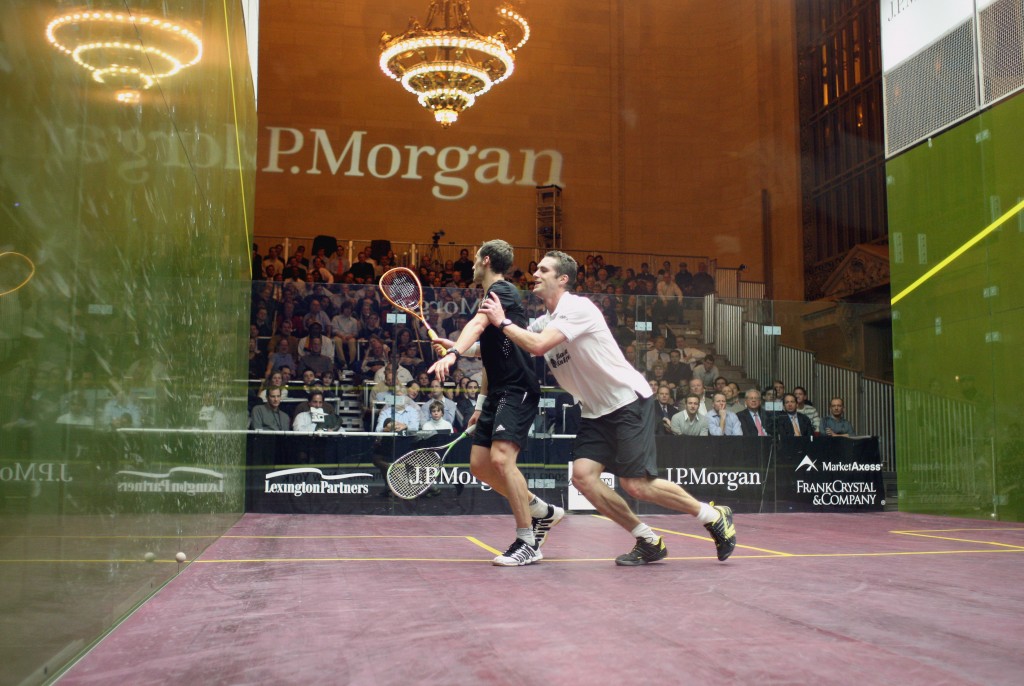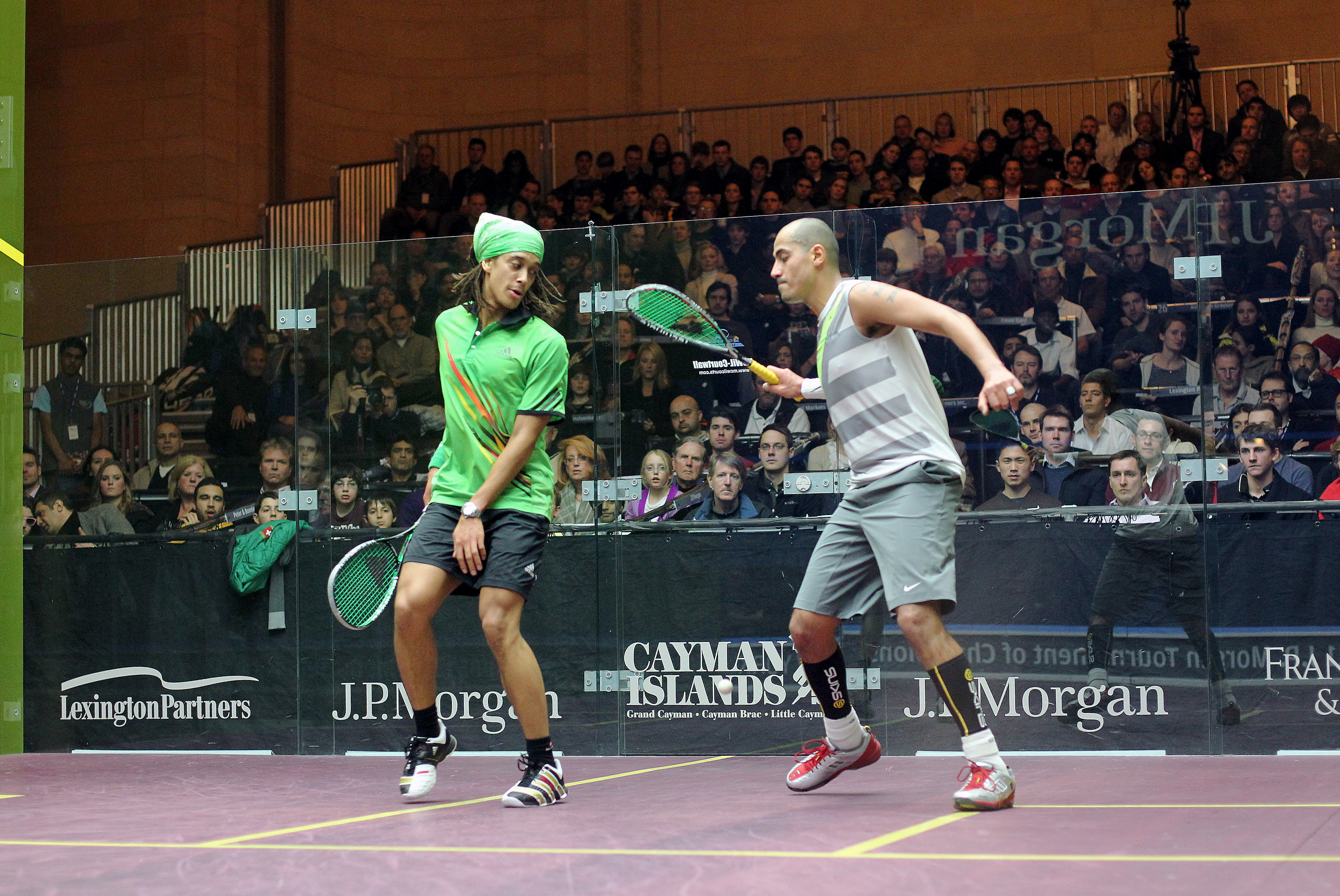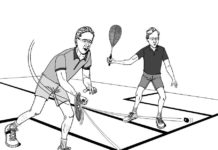By Barry Faguy, WSF Referees and Rules Committee
There are obviously many ways a player can cheat in Squash—but the ways we’re focusing on today are hidden in a euphemism. Of course, political correctness precludes having a section entitled ‘Cheating’—so the rules have come up with something that almost sounds complimentary. It’s called ‘Created Interference’. It’s not a compliment.
We’re talking about a rule that could be characterized as addressing moral issues—Rule 12.7.4 and its complementary Guideline 11 (OK, OK, no more rule numbers!). So, there are two ways the striker can cheat when it comes to interference:

By taking a path to the ball that deliberately and unnecessarily engages the opponent, or
Taking a swing that deliberately and unnecessarily engages the opponent.
You’ll notice that we have left out interference to the ‘view’ and to the ‘path of the ball’—because practically speaking, the striker cannot manipulate either of those into something artificial. And that’s what we are talking about here—artificial interference. The guideline actually uses the words “no genuine reason” to describe these actions, so let’s see how that phrase applies when it comes time for you to make a decision.
Access-interference cheating
Often referred to as ‘playing the opponent’, instead of going directly to the ball, we see the striker take a route that unnecessarily picks up the opponent in a totally contrived way. The striker resorts to this for one of three reasons; either, the striker is running out of gas and needs a break, or sees what will be a tough return, or is trying to manufacture a stroke. Of course, none of those is a ‘genuine’ reason. Attempting to make it look like there is interference when really there isn’t, is indeed true created interference—cheating. The opponent has originally provided direct access. There is only one decision possible: No Let!
Whoops!—‘Wrong footing’
Now, a quick caution; don’t confuse the preceding with what is known as ‘wrong footing’—an action that resembles created interference. The distinction between the two centers around the reason why the action was taken. When the striker mistakenly takes the wrong path to the ball, the rules consider that to be a genuine reason—an honest error. It happens all the time. We all do it. By itself, wrong-footing is not a reason to deny a let. However, valid reasons for denying a let in a wrong-footing scenario would be that you believed that the striker would not have been able to recover to make the return—or that the striker was not making an appropriate effort to do so.
 Help in making the distinction
Help in making the distinction
A hall-mark of true created interference is the striker’s lack of any effort to recover from the so-called “interference.” If a player’s intention is to cheat—why bother with an attempt at recovery towards the right direction? The worse that things can be made to look, the better, right?!
On the other hand, when the striker has made an honest mistake and gone the wrong way, most often we’ll see an attempt to recover. That’s where the interference generally occurs—during this change-of-direction recovery effort. As a consequence, the wrong-footed striker will often accept and play through more interference than usual because that player recognizes a certain responsibility for having ‘caused’ (not ‘created’) the problem—and not least and less altruistically, because that striker is acutely aware of the natural, primitive instincts of Referees who tend to punish that player for the mistake.
The bottom line here is that there is nothing wrong with going the wrong way— but it must be for the right reason!
Swing-interference cheating
Somewhat different in characteristics from ‘access’ interference, but with the same disingenuous intent, here the striker broadens the swing unnecessarily to pick up the opponent—again a totally artificial contrivance. Given the severity with which swing interference is generally treated (being the most sensitive of all movements)—creating an interference here will be seen by a less-than-honest striker as a better opportunity to coax a stroke out of a Referee. Again, this is cheating—and there is only one decision possible: No Let!
Whoops!—‘Incompetence’
Here’s another caution; it’s possible to have an unnecessarily large swing simply because the striker is just a lousy player. You’ll rarely find this at the pro level—but it’s a pandemic problem lower down the line. A big swing by virtue of incompetence is not true ‘created interference’. There is no intent to cheat—and you should not automatically assess a No Let to that player. The rules recognize this problem—and so a provision exists that instead directs you to simply not award a stroke in such circumstances. (OK, I’ll break my prom- ise and tell you it’s Rule 12.10. Sorry!)
Help in making the distinction
Of course, players can cheat at any level—and an unnecessarily big ‘sweep-net’ type of swing by a lower-level player can indeed be an attempt to cheat. Remember that most players are honest—so avoid too much cynicism that sees most big swings as an effort to cheat. Given the continuum in which such interferences happen, there are times where it is simply impossible to know if the swing interference is all artificial, partly artificial, or genuine. You must then default to a let.
Conclusion
Fixing something that is broken is much easier when you know how it works. A rally interrupted by an appeal is broken— and fixing it (rendering a fair decision) is much easier when we know the ins and outs of that form of interference. Hopefully, this is now a bit easier for you?





